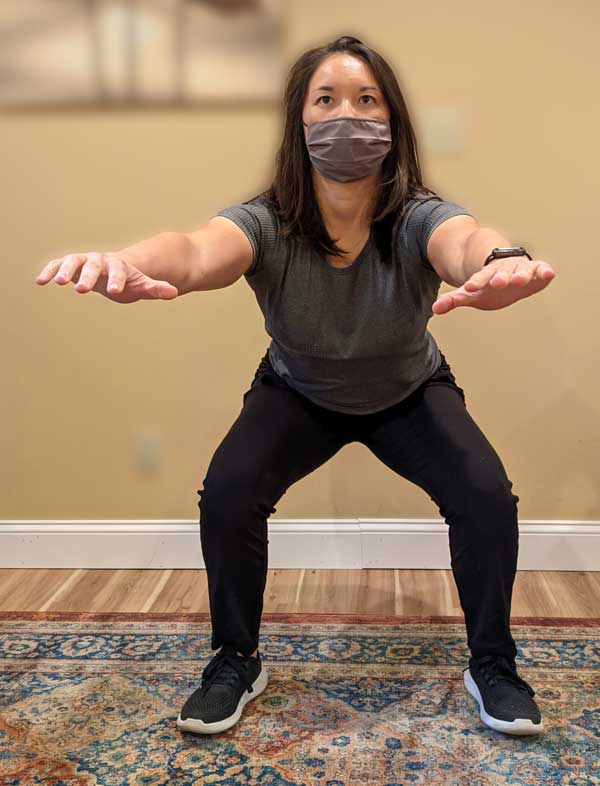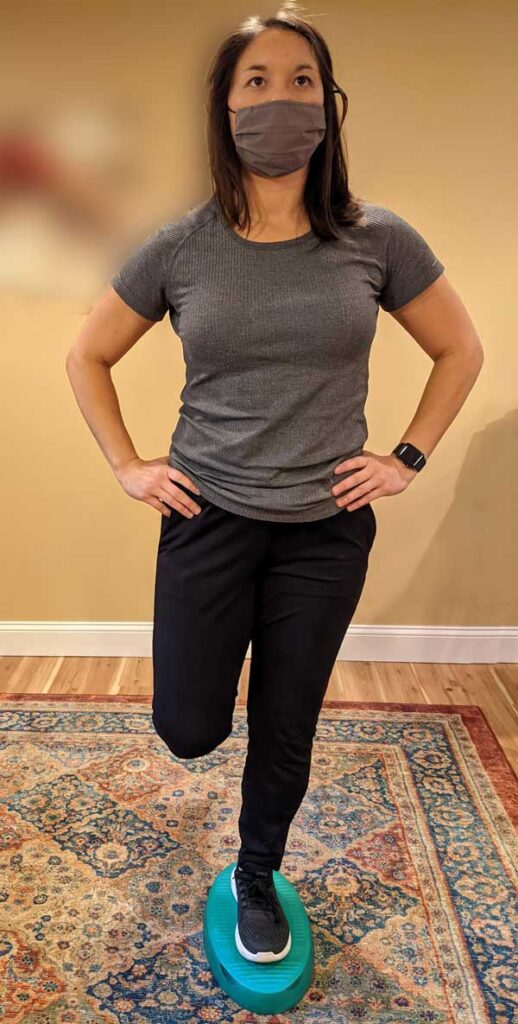Whenever the Green Mountains transform from the beautiful fall foliage to a white blanket of snow, we Vermonters start to count down the days until our favorite ski resorts open.
As I start to move my backpacking gear to the back of the garage and start sorting through my ski gear, I’m often reminded that I also need to prepare my body for the upcoming ski season. These are the 4 areas I suggest we work on in preparation ski season:
- Leg Muscle Strength,
- Balance,
- Cardio,
- Endurance.
The list of exercises and activities you can do to work to improve all 4 areas is endless, but I’ll share a few that will get you started. I like the list below because you can do most of them without any additional equipment right in your living room.
Leg Muscle Strengthening:

Squats
Squats are a powerhouse exercise for your lower body that strengthen your quads, gluts, hamstrings, hip flexors, adductors (groin muscles), and calves. All of these muscle groups are used while skiing. Strengthening these muscles will help support your knee joints and help build up stability.
Single Leg Lunges
Single Leg Lunges go after the similar muscles as a basic squat but also incorporate a balancing component, which is extremely important when skiing.
Glut Bridges
Glut bridges are extremely important to strengthen the gluteal muscles as they help support your leg movements while skiing. Your gluteus maximus, medius, and minimus helps extend your leg, rotate your leg and stabilize your hips and knees. To complete a glut bridge, lay on your back with your knees bent and your heels as close to your butt as you can. In a 2 second count raise your butt off of the ground and hold for 1 second then lower your buttock in a 4 second count. Complete 3 sets of 10.
Balance:
Core strength is extremely important when it comes to skiing, especially when it comes to staying balanced while turning and stopping.

Single Leg Stance
I love the single leg stance because it is easy to do and you can do it anywhere. If you want to add a challenge, close your eyes as you do it. If you want to make it more challenging, stand on one leg on a rolled up towel or a foam mat to really test your balancing after you’ve been able to master it on flat ground.
Planks
Planks can be completed in a variety of methods. If core exercises are difficult for you, I recommend starting on your knees and elbows and progressing to your toes and elbows. In order to not cause low back compromise, slightly ‘tent’ your sacrum to the ceiling. Hold this position anywhere from 30 seconds to a minute at a time. Feel free to challenge yourself and add additional time.
Deadbugs
Deadbugs are one of my favorite core exercises. I recommend these all the time to patient’s as they are better overall than a crunch for your low back. Start by laying on your back with your arms extended towards the ceiling and both your hips and knees bent to 90 degrees. Keeping your core in an abdominal brace and your spine neutral, slowly reach your right arm backward, over your head and toward the floor as you simultaneously extend your left knee and hip, reaching your left heel toward the floor. Move slowly and steadily, breathing in as you perform the extensions, avoiding any twisting or movement of your hips and abs. Stop the movement just before your arm and leg touch the ground. Slowly return your right arm and left leg to their starting positions and repeat with your left arm and right leg while keeping your right arm and left leg steady as you extend your left arm and right. Repeat this 10x per arm/leg combination.
Cardio:
Cardio will increase your heart rate and prepare you for staying on the slopes for an extended day. If it’s been awhile since you have been active, I strongly recommend starting with an interval training regimen. Choose whatever activity below you enjoy. Mixing up your activity is never a bad idea as you will involve different muscle groups instead of always using the same.
- Running
- Biking
- Elliptical
- Stair Climber
Endurance:
As you build up your strength and cardio, start focusing on increasing your endurance by increasing the amount of reps of every exercise above and the time of the cardio activity of choice. As you do this, listen to your body so that you don’t overdo it and cause injury.